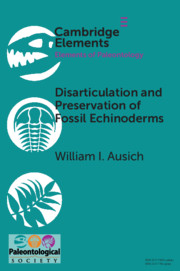Wachsmuth, C., &
Springer, F. (1880–1886). Revision of the Palaeocrinoidea. Proceedings of the Academy of Natural Sciences of Philadelphia Pt. I. The families Ichthyocrinidae and Cyathocrinidae (1880), pp. 226–378, (separate repaged pp. 1–153). Pt. II. Family Sphaeroidocrinidae, with the sub-families Platycrinidae, Rhodocrinidae, and Actinocrinidae (1881), pp. 177–411, (separate repaged, pp. 1–237). Pt. III, Sec. 1. Discussion of the classification and relations of the brachiate crinoids, and conclusion of the generic descriptions (1885), pp. 225–364 (separate repaged, pp. 1–138). Pt. III, Sec. 2. Discussion of the classification and relations of the brachiate crinoids, and conclusion of the generic descriptions (
1886), pp.
64–
226 (separate repaged to continue with section 1, pp. 139–302).
Google Scholar 


